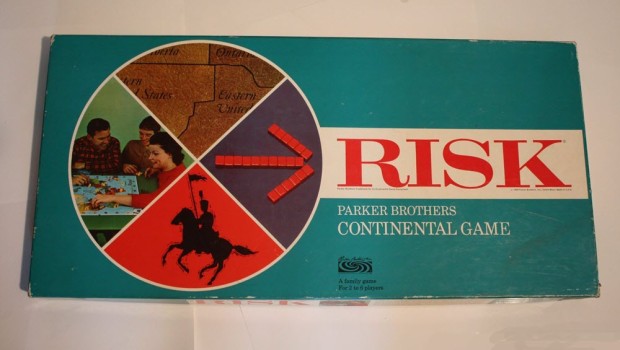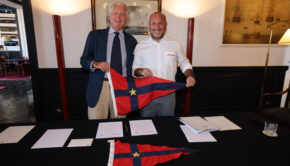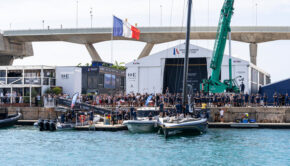America’s Cup: Standing by to see who likes this game
Published on June 5th, 2014
Following the release of the Protocol of the 33rd America’s Cup on July 5, 2007, there was strong concern in how defender Société Nautique de Genève (SNG) and the Alinghi team had structured the next event. The rules were widely viewed as being largely lopsided in favor of the defense.
Among the terms that drew significant concern was how the defender would be sailing in the challenger series.
“All the teams should have the same amount of true racing time,” explained Alinghi skipper Brad Butterworth. “If the challenger trials or lead-up regattas excluded the defender, they would sit on his own for months, which is unfair and tough on sponsors also. In the end the top challenger has to race the defender anyway; it’s the same for all parties. Also, because of the one boat sailing restriction (no two boat testing for cost saving), the choice was between allowing the defender to race with challengers longer or to allow the defender special boat allowances, which would have been even more tilted to the defender.”
Back in 2007, leading the charge for change was Larry Ellison and Golden Gate Yacht Club (GGYC), who was the second challenger to submit entry. The GGYC entry followed Club Nautico Español de Vela (CNEV), who had been selected as the Challenger of Record.
But when it was found that CNEV might not be a viable club under the terms of the Deed of Gift, that was the opening needed to invalidate the club and insert the next in line, GGYC, to negotiate revisions to the Protocol.
As history shows, that didn’t go so well. After years of legal wrangling between SNG and GGYC, the result was the 2010 ‘Monster Multihull’ Match in which GGYC defeated SNG.
Fast forward to now; GGYC has released the Protocol for the 35th America’s Cup which has two features that recall the past, though with some caveats:
Challenger Series
The defense team can compete in the AC World Series (ACWS) as they did prior to the 34th America’s Cup, except this time the ACWS impacts the seeding for the AC Qualifiers (ACQ). The defender can also compete in the ACQ, a 30-day event that reduces the challenger field to the top four teams. Also, if the winner of the ACQ is a competitor in the AC Match, they are awarded ‘one win’ in the best of 13 AC Match. The defender is excluded from the AC Challenger Playoffs (ACCP), an event for the top four challenging teams to determine who will face the defender in the AC Match.
Two boat testing
The challengers are only allowed to build one AC62 while the defender can build two boats. However, both boats for the defender must come from the same moulds, and the defender must use the first boat launched in the ACQ and the AC Match unless it is damaged. Also, the defender cannot sail its two AC62s together until after the ACQ. The amount of time between the ACQ and the AC Match is not yet stated, but could be over three months. There will also be an as of yet unstated period when the challengers will be able to sail their AC62s “in a coordinated manner with another competitor”.
Already, an editorial in the New Zealand Herald is calling for the Kiwi team to “boycott Ellison’s skewed Cup farce”.
Back in 2007, when asked about Larry Ellison’s concerns regarding the Protocol for the 33rd America’s Cup, Butterworth noted: “Larry doesn’t have to enter if he doesn’t like the game.”
Entry period for the 35th America’s Cup is from June 9 through August 8, 2014. Standing by to see who likes this game.









 We’ll keep your information safe.
We’ll keep your information safe.